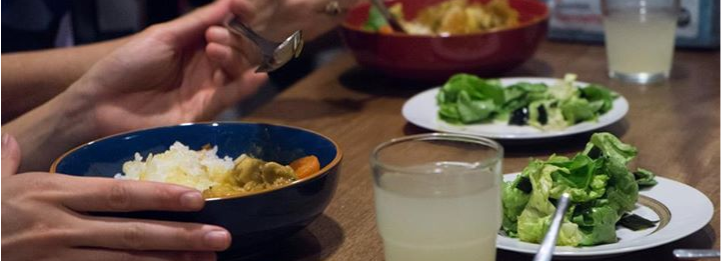
In conjunction with the Japanese Film Festival this year, Washoku Lovers is holding a series of curry related events, including cooking classes! Last Thursday we held our blogger-only event which was super fun. Supported by Daiso and held at Hideo Dekura‘s culinary school, you’ll learn how to make Japanese style curry from scratch using ingredients which can all be found at Tokyo Mart.
Even though they’re all called “curry”, Japanese, Indian, and Thai curries are all very different. Japanese curry has a distinct flavour with a thick sauce-like consistency and is usually brown to dark brown in colour. Thai curry is made with coconut milk and is quite runny. It can be any number of colours, famously red and green, with a lot of spice depending on which type you get. Indian curries have the most variety of flavour that comes from the many spices used to make them, the curry itself is less sauce-like and more of a paste.
Almost any combination of vegetables and meats can be used in Japanese curry. The most common vegetables are onions, carrots, and potatoes. For meat, beef, pork, and chicken are the most popular. Katsu-karē is a crumbed deep-fried pork cutlet topped with curry sauce. Curry was introduced to Japan during the Meiji era (1868–1912) and since then, the dish has become popular and available for purchase in supermarkets and restaurants. Japanese curry has evolved since it was first introduced, and it is now so widely consumed that it can be called a national dish. Not Indian, and not Thai, this is Japanese curry.


Prize before 31st October:
*1 Prize after 1st November to 15th:
*1 A winner will get to choose which prize to get.
*2 $50 Voucher can be redeemed only at Washoku Lovers partnered restaurants.